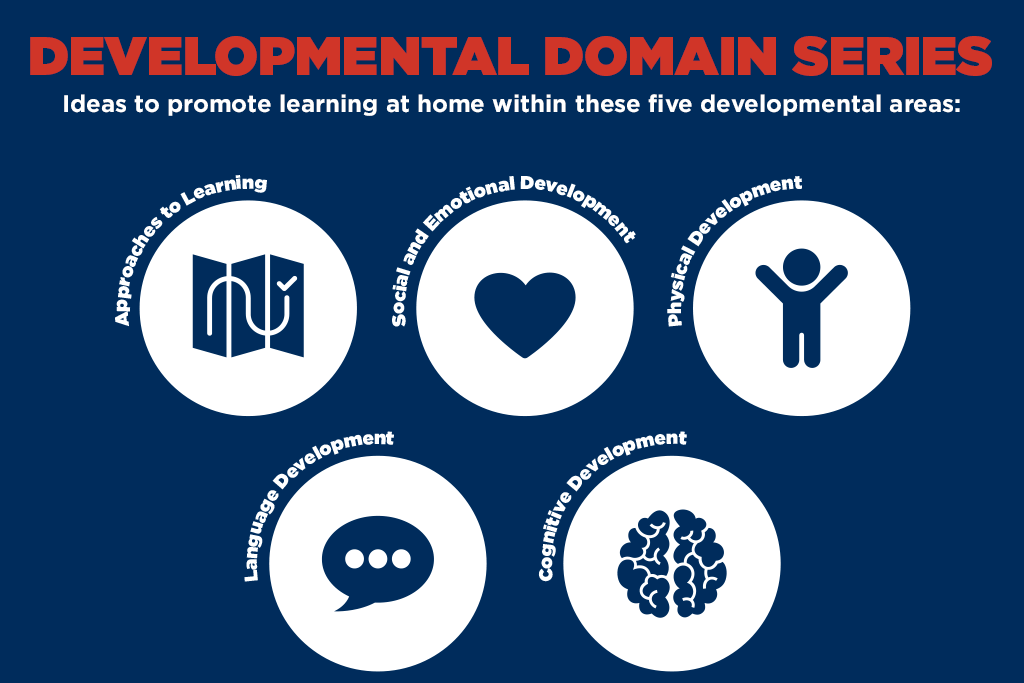- 877.684.1613
- Schedule a Tour
 This month, let’s take a closer look at the Cognitive Development Domain, focusing on math.
This month, let’s take a closer look at the Cognitive Development Domain, focusing on math.
Cognitive development involves how children think, explore, and figure things out. Math is about problem-solving and logical thinking. It involves numbers, quantity, measuring, patterning, classifying, and sequencing. Young children are fascinated by math and learn it best when it relates to their everyday experiences. Math is everywhere and it is fun! You can help your child develop math skills at home.
Infants:
- Read books about quantities with your infant, for example, The Three Little Bears. As you read, count the pictures and objects in the book.
- Point out different shapes and sizes when you see them.
- When talking to your infant, introduce sequencing. For example, “First we’ll have breakfast, then we’ll get dressed, and then we’ll go see your friends!”
Toddlers/Twos:
- Encourage your child to make familiar shapes such as squares, triangles, and circles out of playdough.
- Label your child’s toy boxes with a picture of what belongs inside. When cleaning up, encourage your child to place their toys in the box with the matching picture.
- While playing with your child, encourage them to count objects. For example, count the number of blocks in a structure, the number of stuffed animals in the toy box, etc.
Preschool/Pre-K:
- While coloring with your child, put two crayons next to each other (with one set of ends lined up) and ask which one is longer. Put out a bunch of crayons and see if they can order them from longest to shortest.
- Model mathematical language for your child when possible. For example, “There were four of us at the dinner table, but then one left. Now there are fewer people at the table. How many of us are left?”
- Provide your child with opportunities to experiment with non-standard measuring tools such as bowls, spoons, and cups. Encourage experimentation by asking questions such as, “How many scoops of water do you think could fit in this bowl?”
School Age:
- Encourage your child to think about fractions. For example, ask how you should cut a sandwich so that you create two equal pieces.
- While your child is playing with a group of toys such as blocks, cars, or miniature animals, ask them to sort the objects by size, color, or type. Once they have done this, ask follow up questions. For example, after they sorted the toys into one group of animals that live on land and one group of animals that live in water, ask what the total number of animals is and how many you would have if you took away all the water animals.
- Play games with your child in which you make up an auditory pattern and they repeat it.
Here are some great resources about how to support math skill development at home:
https://www.naeyc.org/math-at-home
https://www.naeyc.org/our-work/families/support-math-materials-your-home
Next month, we’ll focus on the next portion of the Cognitive Developmental Domain, Creative Arts Expression.
Miss the most recent article in our series? Read it here.
